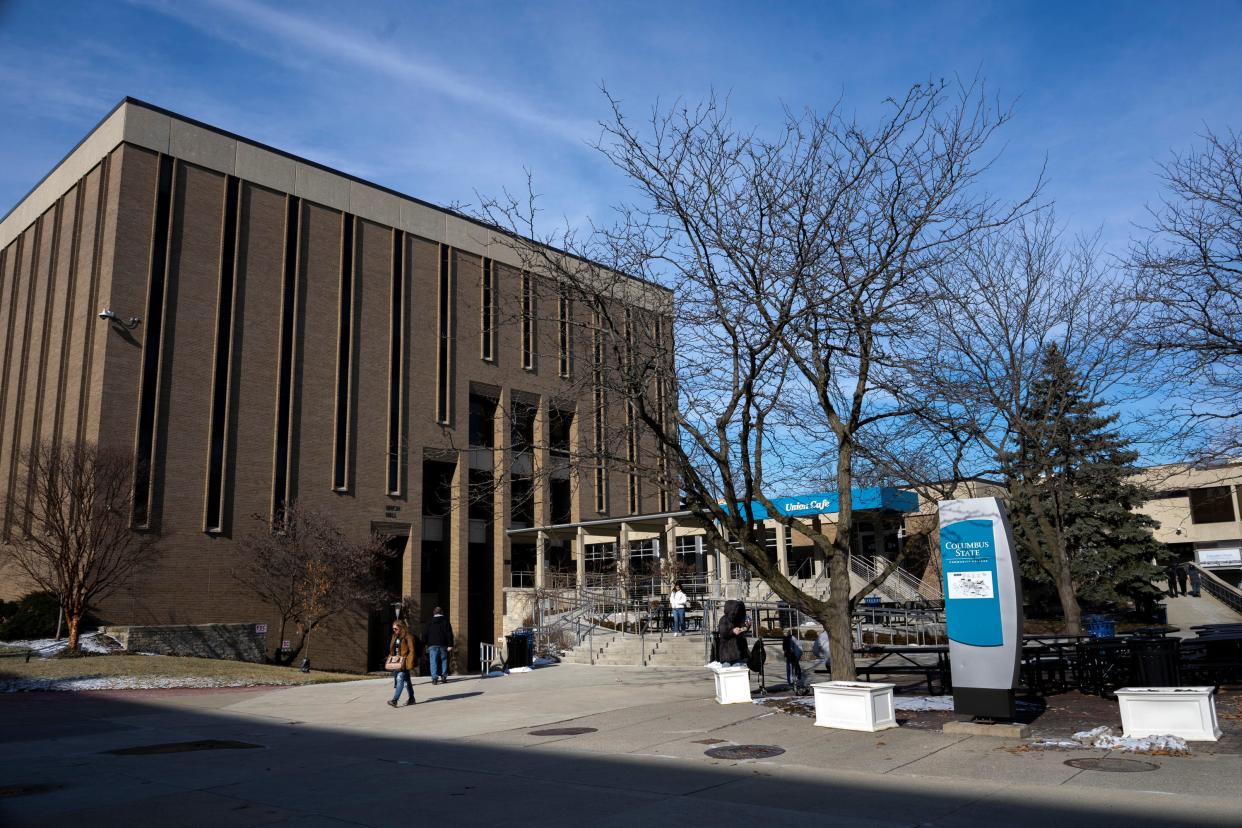College enrollments starting to stabilize locally and across U.S. after COVID, report says

After three years of stunted enrollment from the COVID-19 pandemic, undergraduate enrollment at colleges and postsecondary institutions locally and nationally is beginning to stabilize, according to a new report released Wednesday.
Greater Columbus colleges and universities saw scant enrollment declines last fall compared to previous semesters, the report showed, and experts say there is hope higher education overall is starting to recover.
According to the report by the National Student Clearinghouse Research Center, undergraduate enrollment nationally during the fall 2022 semester saw smaller declines than previous semesters, contracting by only about 0.5% or approximately 94,000 students compared to fall 2021. There are about 15 million total enrolled students nationwide at public, private and community colleges and other postsecondary institutions.
Overall enrollment, however, remains well below pre-pandemic levels, down about 1.2 million undergraduates and 1.1 million total enrolled (both undergraduate and graduate combined) compared to fall 2019.
"We found a further decline in the number of undergraduate students enrolled in colleges and universities this year, but they were declining at a slower decline than in each of the previous two years," Doug Shapiro, executive director of the National Student Clearinghouse Research Center, told reporters Wednesday.
Small increases point toward hope in higher ed enrollment
There are bright spots in this enrollment report, which collected data from more than 3,600 postsecondary institutions nationwide.
New freshmen enrollment, for instance, is up compared to fall 2021.
Fall freshman enrollment increased by about 97,000 students, or more than 4%, compared to the previous fall. Freshman enrollment remains down though by about 150,000 students compared to fall 2019.
“It is encouraging to start seeing signs of a recovery in the numbers of new freshmen,” Shapiro said. “Although freshmen classes are still well below pre-pandemic levels, especially at community colleges, the fact that they are swinging upward in all sectors is a positive indicator for the future.”

Undergraduate enrollment was essentially flat at community colleges (less than a 0.5% increase or 16,700 students) and private nonprofit four-years (a 0.1% decrease or 2,500 students), following the previous year’s declines of nearly 7% and 2%, respectively.
Shapiro said there's been a "notable inversion" when it comes to community college enrollment, which has been troubling higher ed experts with its steep declines during the last few years.
Now, community colleges are seeing a little more growth, thanks in large part to a 12% increase of dual-enrolled high school students.
Public four-year schools saw bigger declines, dropping another 1.4%, or 88,000 students, compared to fall 2021. But that dip was not as bad as the 3% decline those schools saw between fall 2020 and 2021. Private for-profit four-year schools added 29,000 more students, a 5% increase from fall 2021.
How area colleges fared
Greater Columbus colleges and universities saw small declines this fall compared to previous semesters.
After recording the greatest number of students to its Columbus campus in fall 2021, Ohio State saw about a 2% overall enrollment decline, from 61,677 to 60,540 this fall.
Ohio University, which has seen a major drop in its undergraduate enrollment since well before the pandemic, saw a small increases in both undergraduate (14,684 students from 14,505) and graduate enrollment (2,194 students from 1,989) compared to last fall.
Miami University's fall 2022 enrollment was 4,136, down slightly from a record 4,509 incoming freshmen in fall 2021, but university officials previously said the lower figure was intentional to avoid a strain on its residence halls and other facilities.
Enrollment at area private, liberal arts colleges was split last fall.
Denison University and Ohio Wesleyan University saw undergraduate enrollment increase 4% and 5%, respectively. Meanwhile, Otterbein University and Capital University reported about 6% declines in overall enrollment. (Denison and Ohio Wesleyan do not offer graduate programs.)

Columbus State Community College saw about a 1% gain in undergraduate enrollment last fall, from 25,102 students in fall 2021 to 25,272 last semester.
Brent Wilder, Columbus State spokesperson, said the college is also seeing lots of dual-enrollment high school students, more than the national average. He said the college has seen more than 16% growth, with gains in new and continuing high school students, year over year.
Overall, Midwestern colleges and universities saw fewer students enroll compared to other geographic regions, Shapiro said.
Schools in the Midwest's undergraduate enrollments declined at about double the national rate, losing about 34,000 undergraduates, or a little more than 1%. Northeastern institutions saw a similar dip, while enrollment grew slightly in the West and the South.
Graduate student enrollment down for first time in two years
Graduate enrollment, on the other hand, fared worse than its undergraduate counterparts.
Fall 2022 saw 39,000 fewer graduate students, or a decrease of a little more than 1%. That decline came after two consecutive years of strong growth, 3% in 2020 and more than 2% in 2021.
During times of economic recession and uncertainty, it's common to see people enroll and re-enroll in college to switch careers or get new credentials. While students didn't flock back to higher ed the same way they did during the 2008 Great Recession, there was certainly a small pandemic-led influx of grad school enrollment.
Shapiro said that's likely now over.
"We're now seeing the end of that growth trend at the graduate level," Shapiro said.
Sheridan Hendrix is a higher education reporter for The Columbus Dispatch. Sign up for her Mobile Newsroom newsletter here and Extra Credit, her education newsletter, here.
shendrix@dispatch.com
@sheridan120
This article originally appeared on The Columbus Dispatch: Ohio colleges saw some enrollment declines, but beginning to stabilize

